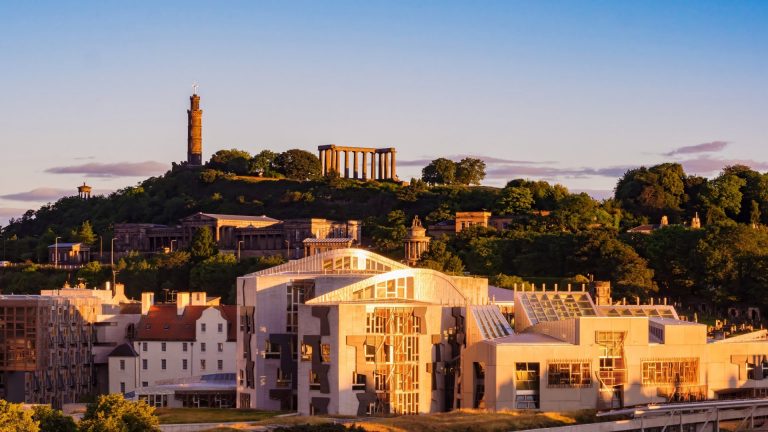The first budget of the parliament was billed by Kate Forbes as a budget that was about transition from the pandemic into a period of recovery. But it was also billed as ‘a budget of choices’.
So what were the choices made?
On the spending side, most of the key choices were known about in advance given the governments commitments.
- Health and social care consequentials from the UK government’s spending in England are passed onto health and social care in Scotland. As a result, the health budget will reach over £17bn in 2022/23, around 15% higher than pre-pandemic health spending.
- The doubling of the Scottish Child Payment to £20 per week, which will be implemented from the start of the 2022/23 year was, as expected, a key focus of the budget speech.
- The government reiterated its commitments to substantially increase teacher numbers over the parliament, backed by a £1bn fund over the five years.
These flagship policies were known about in advance, and face limited if any dissent from opposition parties.
Were there any surprises?
Rolling back reliefs
Perhaps the biggest surprise of the budget was how quickly Kate Forbes decided to roll back non-domestic rates reliefs for businesses in retail, hospitality and leisure. This year, these businesses have received full reliefs on their bills, at a substantial cost to the government of £736m.
Kate Forbes was expected to use the budget to signal a rolling back of the reliefs in 2022/23. But the speed of the roll-back came as a surprise. RHL businesses will be eligible for a 50% relief, but only for the first three months of the financial year; moreover there is a cap on the amount of relief by the taxpayer. This policy is less generous than in England, where 50% reliefs will be available for the whole financial year for eligible businesses.
On this, the government has prioritised its aspirations for public services spending over calls from business organisations to continue the relief for longer. For a transitionary budget the relief is removed more abruptly than many had anticipated. But the government may have been persuaded by arguments that, the longer the reliefs are maintained, the lower their likely economic impact.
A deteriorating outlook on income tax
The Scottish Fiscal Commission delivered Kate Forbes bad news on income tax forecasts. Since their last forecasts in August they have wiped off £400m from their forecast of income tax revenues in 2022/23 as a result of a less upbeat assessment of earnings growth.
Significantly, this means that the forecast of the ‘net tax’ position for 2022/23 is now negative. In other words, the Scottish budget is forecast to be lower as a result of income tax devolution than it would have been without income tax devolution – despite Scottish taxpayers paying around £500m more in income tax than they would if the UK policy applied.
This is the result of the fact that employment and earnings have grown less quickly in Scotland than in rUK since 2016/17. Because income tax is devolved, Scotland no longer receives a share of the relatively faster growing revenues south of the border. This was a known risk of tax devolution at the time.
But it does not in itself undermine the Scottish government’s distinctive income tax policy. Without this, the ‘net tax’ position would have been even more negative.
Tax gimmicks?
The government chose to increase the starter and basic rate bands by inflation (3.1%). It is important to note however that this does not mean that the gross income at which taxpayers start paying the 20% and 21% rates has increased by 3.1% – it means instead that the size of the income bands above the Personal Allowance has increased by 3.1%.
Why does this matter? Well, it means that the gross income thresholds at which the 20% and 21% rates apply will increase by significantly less than inflation. In fact, the income threshold at which the 20% rate applies will increase by less than 0.5%, whilst the intermediate tax threshold will increase by 1.5%.
Compared to a decision to freeze thresholds in cash terms, this uprating policy benefits individual taxpayers earning above £25,000 to a maximum of just under £5 per year. But those earning below £25,000 benefit by less than £1 per year, compared to a decision to freeze thresholds.
If this policy is designed to support low-income households during a time of inflationary pressure and uncertainty, it feels underwhelming.
There was another gimmicky policy on Non-Domestic Rates. Keen to continue the narrative previously that Scotland has the ‘most competitive business rates’, the government announced that the poundage rate (i.e. the rate charged on a business’s rateable value) would be increased by less than inflation, and it would continue “to be the lowest poundage rate in the UK”. However, the UK Government froze poundage in its budget, at 49.9p – and the SG increase takes it to 49.8p. This difference is worth less than £30 a year to a property with an average rateable value. The difference is unlikely to be considered material by businesses.
Local government – more funding but more constraints
Followers of Scottish budgets will note that the story here is familiar to previous years.
The core local government budget is down slightly in real terms in 2022/23. But, an additional £800m funding from other portfolios is transferred into the local government settlement to cover a range of priorities and commitments, including funding to pay a higher living wage to care staff, teacher recruitment, health and social care integration, and expansion of social care provision.
The additional funding means the overall local government funding settlement is up by more than 4% in real terms. This additional funding is not strictly speaking ringfenced, but it will be required by local government to meet the additional commitments expected of it.
Interestingly councils will have complete flexibility to set the Council Tax rates in 2022/23 without any caps or constraints. A welcome boost to local government financial responsibility, or passing the buck for difficult decisions? Regardless, it will be interesting to see how different councils respond to this choice.
A progressive policy on public pay
The government’s announcements on public sector pay policy emphasised, as in previous budgets, their progressive pattern.
Employees earning up to £25,000 have been guaranteed an inflationary uplift of at least £775, which equates to a rise of 3.1% for someone earning 25,000, in line with the September inflation figure published by the ONS.
However, those earning over £25,000 are not going to see their pay keep up with inflation. Those earning up to £40,000 will get an uplift of £700, while those earning over £40,000 will get an uplift of £500 – or around a 1% uplift for someone earning £50,000. Higher paid public sector workers will see their pay declining in real terms.
Kate Forbes also announced a minimum wage floor of £10.50 for all bodies covered by the pay policy, including social care staff. Specific funding has been provided by the SG to local authorities to implement this for social care workers.
A budget for climate change?
As expected, a key emphasis of the budget speech was reducing Scotland’s contribution to climate change. But understanding whether the policies announced will be sufficient to meet climate targets will require further analysis. The Committee on Climate Change reported this week[1] that while the ambition behind the Scottish targets is laudable, there is currently a gap between that aspiration and the action being taken to achieve it.
Conclusions
This was a budget that largely conformed to expectations. A big increase in health and social care funding accounts for a substantial share of the spending increase on last year, and a big emphasis was placed – rightly – on the government’s flagship and distinctive policy to reduce child poverty although more will no doubt be needed if the statutory child poverty targets are to be met.
If there was a surprise, it was the decision to roll-back Non-Domestic Reliefs, for retail, hospitality and leisure businesses, more quickly than many had anticipated, especially in the context of the UK policy.
But there was disappointment too in the significant downward revision to the income tax forecasts compared to just a few months ago. Kate Forbes will have hoped that the SFC might deliver some sort of fiscal windfall – the like of which the OBR often seems to grant UK chancellors. But rather than finding extra money down the back of the sofa, the SFC forecasts make for a disappointing outlook, both in 2022/23 and beyond.
[1] https://www.theccc.org.uk/publication/progress-reducing-emissions-in-scotland-2021-report-to-parliament/
Authors
Mairi is the Director of the Fraser of Allander Institute. Previously, she was the Deputy Chief Executive of the Scottish Fiscal Commission and the Head of National Accounts at the Scottish Government and has over a decade of experience working in different areas of statistics and analysis.

David Eiser
David is Senior Knowledge Exchange Fellow at the Fraser of Allander Institute
Emma Congreve is Principal Knowledge Exchange Fellow and Deputy Director at the Fraser of Allander Institute. Emma's work at the Institute is focussed on policy analysis, covering a wide range of areas of social and economic policy. Emma is an experienced economist and has previously held roles as a senior economist at the Joseph Rowntree Foundation and as an economic adviser within the Scottish Government.


